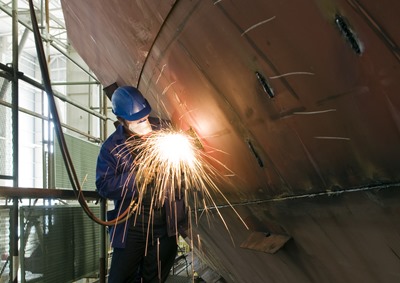 Getting injured on the job is a nightmare for all parties involved. Even more so when that injury prohibits you from being able to work. That’s where workers’ compensation insurance comes in, to protect workers and employers in the event of an injury. Having a workers’ comp policy in place is even more crucial in the marine industry thanks to certain rules and regulations put in place to protect workers and those who are at risk. Depending on what category your business or work falls into, it may not be up to the business owner or decision maker to decide whether they need a workers’ comp policy. Thanks to the United States Longshore and Harbor Workers’ Compensation Act (LHWCA also known as USL&H), those who work in the maritime industry and fall into certain categories, will have coverage that is required by the federal government, not just the state. Having peace of mind when it comes to coverage can help rid your life of the question, “What’s going to happen to me if I’m injured at work?”
Getting injured on the job is a nightmare for all parties involved. Even more so when that injury prohibits you from being able to work. That’s where workers’ compensation insurance comes in, to protect workers and employers in the event of an injury. Having a workers’ comp policy in place is even more crucial in the marine industry thanks to certain rules and regulations put in place to protect workers and those who are at risk. Depending on what category your business or work falls into, it may not be up to the business owner or decision maker to decide whether they need a workers’ comp policy. Thanks to the United States Longshore and Harbor Workers’ Compensation Act (LHWCA also known as USL&H), those who work in the maritime industry and fall into certain categories, will have coverage that is required by the federal government, not just the state. Having peace of mind when it comes to coverage can help rid your life of the question, “What’s going to happen to me if I’m injured at work?”
What Is It?
The Longshore and Harbor Workers’ Compensation Act is a law that was put in place by the United States federal government to assure the coverage and minimize the impact of injuries and death for employees and their families in the marine industry. It’s no secret that those who work in the marine industry can be seen as higher risk employees due to the jobs they perform. This law requires employers to provide sufficient workers’ compensation coverage since it is often a major expense for most businesses.
What Does It Do?
The Longshore and Harbor Workers’ Compensation Act provides workers’ compensation for anyone working in a marina or on the water. It protects you from injury and occupational disease while on the job. Benefits are only available to those maritime employees who meet certain criteria known as a “Status” and “Situs” test.
Status Test- The Status Test is associated with the with the work that is performed by the employee. Basically, the test decides whether you are performing “maritime” work. This is important because to be eligible for benefits under the act, it must be determined that employees are performing “maritime” work for the employer.
Situs Test- The Situs Test is associated with the location that the employee has performed the work. After determining whether a worker is a maritime employee, they then must determine if the work was performed on, near, or adjacent to navigable water.
How Does This Benefit Me?
The Longshore and Harbor Workers’ Compensation Act gives employees to the power to file claims for injuries that happen while at the workplace. Much of workers’ comp is through state legislation, however being that this one is administered federally, you can have the option to use both your state’s system as well as the federal system, just not at the same time. The Federal Process is a lengthy one, but it’s good to know the coverage is there for when the employees need it. The state coverage can provide benefits while the federal reviews the benefits available under the USL&H laws.
Workers’ compensation insurance should be a top priority for all businesses. If you would like more information on workers’ comp or the LHWCA, or are interested in purchasing a workers’ comp policy, or any other form of property & casualty insurance, or group health insurance for your employees, please contact us at 954-828-1819 or visit us online at mhginsurance.com. Our insurance specialists have the knowledge and experience to cover your company’s risks appropriately.